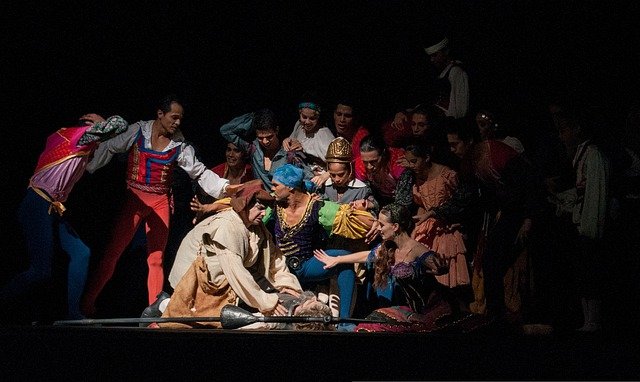
The performing arts take place on a stage.
Art is called the expression of the human being who can resort to different types of resources to capture a product of the imagination or an interpretation of reality. The term comes from the Latin word ars .
Scenic , for its part, has its origin in the Latin word scenĭcus (or scaenĭcus ), in turn derived from skēnikós . The notion refers to what is linked to the scene: the space, also known as the stage, where the representation of a work can take place.
The performing arts , in this framework, are the artistic expressions that are represented on stage . Due to their characteristics, they are usually carried out live and in front of the public, although it is possible to record them on some medium for later reproduction.
Characteristics of the performing arts
For an artistic discipline to be classified as scenic, it must be able to be developed on a stage. For this reason, it is usual to consider that the performing arts are music , dance and theater in all their variants.
It is important to mention that these demonstrations do not take place on a stage per se. That is, they are not always deployed in an elevated structure that is part of a performance hall, a theater or a similar venue. Performing arts can be performed in public or architectural spaces of different kinds, such as a park , a library , or even the street .
Another issue to consider is that certain cultural or traditional activities that are not artistic can be mentioned, due to their characteristics, among the performing arts. A procession or parade , for example, can be integrated into this set.

Dance is part of the performing arts.
Its origin
The cave paintings allow us to reconstruct that music was the first performing art, followed by dance and then theater . These expressions, from their origins, went beyond the aesthetic or recreational, having important ritual and political components.
The practices of shamans, the Panhellenic Games of Ancient Greece , the sacred theater and the Floral Games of Roman times are some primitive examples of the performing arts. With the passage of time , these arts mutated, both in their social role and in their deployment.
Today the performing arts, in some cases, continue to be a vehicle for political manifesto and a tool for the dissemination of values and customs. But they are also constituted as a leisure product and make up a true industry .
The performing arts space
The stage, also called scene , is the physical space where works of performing arts are performed. The concept refers to the boards where the artists are located, although it can also refer, in the same way, to the pit .
The most common format involves installing the stage in front of the audience . However, there are other variants. The stage space can be circular, spread like a platform between people or even surround the spectators.
The premise is that people can see what happens on stage. In any case, in some cases the aim is to provide an immersive experience , thereby modifying the traditional format.
It cannot be overstated that, nowadays, technology plays an important role. Lighting and sound allow the performing arts to be enhanced, amplifying their possibilities.
